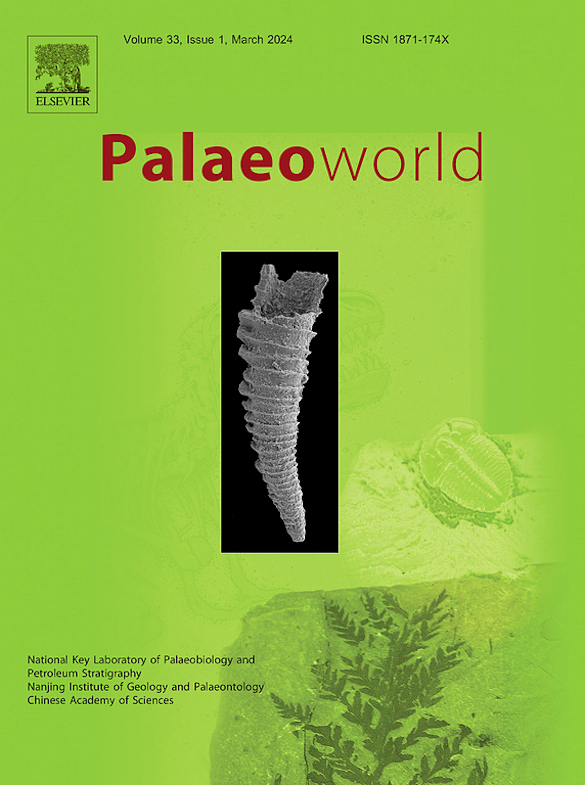 The conical fossil above on the cover of the latest issue of Palaeoworld is the paratype of Conchicolites parcecostatis, a new Ordovician (Katian) cornulitid species from the Korgesaare Formation, Sutlema quarry, Estonia. It is tiny, only about two millimeters long. This species, and another new one below, are now formally described and assessed by Vinn et al. (2024). I’m proud to have been on Olev Vinn‘s team for this project, which also included Ursula Toom (Tallinn University of Technology) and Anna Madison (Russian Academy of Sciences).
The conical fossil above on the cover of the latest issue of Palaeoworld is the paratype of Conchicolites parcecostatis, a new Ordovician (Katian) cornulitid species from the Korgesaare Formation, Sutlema quarry, Estonia. It is tiny, only about two millimeters long. This species, and another new one below, are now formally described and assessed by Vinn et al. (2024). I’m proud to have been on Olev Vinn‘s team for this project, which also included Ursula Toom (Tallinn University of Technology) and Anna Madison (Russian Academy of Sciences).
 Above is the paratype of the other new cornulitid species from the same location: Conchicolites sutlemaensis.
Above is the paratype of the other new cornulitid species from the same location: Conchicolites sutlemaensis.
The fossils in the Korgesaare Formation of Estonia are diverse and have abundant small cornulitids representing at least a half-dozen species of the genus Conchicolites. This group, the smallest of the cornulitids, appears to have been adapted to soft, muddy seafloors, unlike most other cornulitids that are found attached to hard surfaces such as those of carbonate shells and hardgrounds. These new fossils are thus further documentation of an evolutionary trend towards diverse substrates among the cornulitids in the Great Ordovician Biodiversification Event (GOBE).
Cornulitids, for all their ubiquity in the Lower to Middle Paleozoic, are still phylogenetically mysterious. We don’t yet know their larger evolutionary history, so we can’t definitively place them in any particular phylum yet. They seem most likely related to the microconchids and tentaculitids, which are themselves difficult to place. Cornulitids went extinct in the Carboniferous and apparently left us no living descendants to study.
So, these unassuming little critters have their roles to play in life’s history as they present us with new mysteries to solve. Welcome to the world of named taxa, Conchicolites parcecostatis and Conchicolites sutlemaensis!
Reference:
Vinn, O., Wilson, M.A., Madison, A. and Toom, U. 2024. Small cornulitids from the Upper Ordovician (Katian) of Estonia. Palaeoworld 33: 57-64 (https://doi.org/10.1016/j.palwor.2022.12.005).


